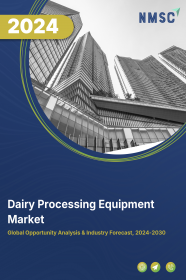
The U.S. Automated Truck/Trailer Loading System Market by Type (Ground-Based and Overhead), by Automation (Semi-Automatic and Fully Automatic), by Load Type (Fluid Loads, Containers, Totes, Pallets, and Wheeled Carts/Cages), by Truck/Trailer Type (Non-Modified and Modified) and Others –Opportunity Analysis and Industry Forecast, 2024–2030
Industry: Construction & Manufacturing | Publish Date: 09-Sep-2025 | No of Pages: 95 | No. of Tables: 122 | No. of Figures: 67 | Format: PDF | Report Code : CM1681
Market Definition
The U.S. ATLS Market size was valued at USD 300.7 million in 2023, and is predicted to reach USD 522.9 million by 2030, at a CAGR of 8.2 % from 2024 to 2030.
An Automated Truck/Trailer Loading System (ATLS) represents a technology-driven solution for material handling, aimed at automating tasks associated with truck and trailer loading and unloading. Typically, ATLS consists of a conveyor system, loading dock, and control system. The conveyor system transports pallets or containers to the loading dock, where the control system manages the loading or unloading process. The principal goal of ATLS is to streamline and optimize logistics and supply chain operations by automating manual tasks involved in handling goods during loading and unloading, thereby improving efficiency, safety, and productivity within warehouse and distribution center environments.
ATLS utilizes a blend of mechanical, conveyor, sensor, and control technologies to efficiently and accurately handle various types of cargo, including individual boxes, containers, pallets, and bulk goods. These systems seamlessly integrate into loading docks, warehouses, and distribution centers, significantly contributing to operational efficiency gains, increased throughput, and enhanced safety by reducing the reliance on manual labour in the loading process. Moreover, these solutions can be customized to meet the specific needs of different industries, cargo types, and existing infrastructure, ensuring adaptability and efficiency enhancements across diverse logistical scenarios.
Growing Safety Enhancements Drive Market Expansion
The rapid advancement of workplace safety requirements in the U.S., coupled with growing regulatory enforcement, is accelerating the adoption of Automated Truck/Trailer Loading Systems (ATLS). Modern solutions integrate high-precision LiDAR, 3D machine vision, and advanced obstacle detection algorithms to monitor personnel movement, identify hazards in real time, and automatically pause or adjust loading to avoid accidents. These intelligent safety controls not only reduce injury risks and equipment collisions but also ensure balanced cargo placement and stability during transit. By protecting both workers and goods while lowering liability exposure, ATLS technology delivers a compelling value proposition for manufacturing, retail, and logistics operators aiming to meet compliance standards and achieve safer, more efficient operations.
Rising Adoption of Automation in Warehouses Accelerates ATLS Demand
The rapid digital transformation of U.S. warehouses is creating strong momentum for ATLS adoption as companies aim for end-to-end material handling automation. With robotic picking, automated storage and retrieval systems (AS/RS), and advanced conveyor networks already in place, ATLS serves as the final link to achieve seamless dock-to-stock or stock-to-dock workflows. By enabling high-throughput, consistent, and accurate loading, these systems help operators meet the speed and reliability demands of e-commerce, just-in-time manufacturing, and omnichannel retail. Integration with warehouse management systems (WMS) further enhances synchronization, allowing operations to run continuously with minimal human intervention. This ability to combine efficiency, precision, and scalability makes ATLS a natural progression in warehouse automation strategies.
High Initial Costs Continue to Restrain Market Growth
The substantial upfront investment required for ATLS procurement and integration remains a significant hurdle for many U.S. operators. System purchase, facility retrofitting, and alignment with existing IT and operational frameworks can demand considerable capital, especially for small and mid-sized businesses with limited budgets. Custom engineering to handle non-standard trailers or specialized cargo types often adds to project costs, while training staff, updating safety protocols, and meeting regulatory requirements introduce additional expenses. Although the long-term return on investment can be strong through labor savings and higher throughput, the high entry cost continues to slow adoption, particularly among operators with narrow profit margins or fluctuating freight volumes.
Integration of Advanced Technologies Unlocks New Opportunities
The rapid convergence of AI, IoT, and predictive analytics is opening new possibilities for the U.S. ATLS market. AI-driven control systems can adapt loading patterns in real time based on cargo weight distribution, type, and sensor feedback, ensuring optimal efficiency and safety. IoT-enabled connectivity allows for continuous system monitoring, performance tracking, and remote diagnostics, while predictive maintenance tools help identify wear and tear before it escalates into costly downtime. These capabilities not only extend system lifespan but also provide granular operational insights for process improvement. As supply chains increasingly adopt connected and intelligent infrastructure, ATLS providers offering scalable, easily integrated, and data-rich solutions stand to capture a larger share of the market.
Competitive Landscape
The U.S. ATLS market comprises various market players, such as Dematic Corporation (KION Group), Daifuku Intralogistics America Corporation (Daifuku), Vanderlande Industries, Honeywell Intelligrated, BEUMER Group, SSI SCHAEFER Systems International, Ancra Systems B.V, Joloda Hydraroll Group, Cargo Floor B.V, FMH Conveyors, Inc, Cimcorp Oy, GEBHARDT Intralogistics Group, FLSmidth — Ventomatic, Maschinenfabrik Möllers GmbH, Alligator Automations Inc.
The U.S. ATLS Market Key Segments
By Type
-
Ground-Based
-
Overhead
By Automation
-
Semi-automatic
-
Fully Automatic
By Load Type
-
Fluid Loads
-
Containers
-
Totes
-
Pallets
-
Wheeled Carts/Cages
By Truck/Trailer Type
-
Non-modified
-
Modified
By Loading System
-
Chain Conveyor System
-
Slat Conveyor System
-
Belt Conveyor System
-
Skate Conveyor System
-
Roller Track System
-
Loading Plate System
-
Others
By Industry Vertical
-
Aviation
-
Cement
-
Paper
-
FMCG
-
Post & Parcel
-
Automotive
-
Textile
-
Pharmaceutical
KEY PLAYERS
-
Dematic Corporation (KION Group)
-
Daifuku Intralogistics America Corporation (Daifuku)
-
Vanderlande Industries
-
Honeywell Intelligrated
-
BEUMER Group
-
SSI SCHAEFER Systems International
-
Ancra Systems B.V.
-
Joloda Hydraroll Group
-
Cargo Floor B.V.
-
FMH Conveyors, Inc.
-
Cimcorp Oy
-
GEBHARDT Intralogistics Group
-
FLSmidth — Ventomatic
-
Maschinenfabrik Möllers GmbH
-
Alligator Automations Inc
Report Scope and Segmentation
|
Parameters |
Details |
|
Market Size in 2023 |
USD 300.7 Million |
|
Revenue Forecast in 2030 |
USD 522.9 Million |
|
Growth Rate |
CAGR of 8.2 % from 2024 to 2030 |
|
Analysis Period |
2023–2030 |
|
Base Year Considered |
2023 |
|
Forecast Period |
2024–2030 |
|
Market Size Estimation |
Million (USD) |
|
Growth Factors |
|
|
Companies Profiled |
15 |
|
Market Share |
Available for 10 companies |
|
Customization Scope |
Free customization (equivalent up to 80 working hours of analysts) after purchase. Addition or alteration to country, regional, and segment scope. |
|
Pricing and Purchase Options |
Avail customized purchase options to meet your exact research needs. |

















 Speak to Our Analyst
Speak to Our Analyst

























